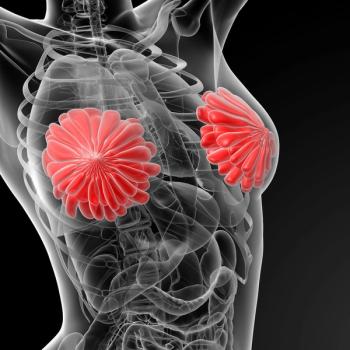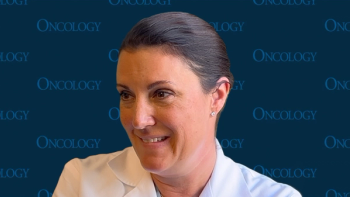
- ONCOLOGY Vol 13 No 9
- Volume 13
- Issue 9
New Approach Reduces Side Effects of High-Dose Chemotherapy for Breast Cancer
Research conducted at City of Hope National Medical Center in Duarte, California, suggests that the most serious and costly side effects of high-dose chemotherapy for breast cancer, including long-term hospitalization and severe inflammation of the
Research conducted at City of Hope National Medical Center in Duarte, California, suggests that the most serious and costly side effects of high-dose chemotherapy for breast cancer, including long-term hospitalization and severe inflammation of the mouth, can be reduced by a new approach to adjusting the dose of the chemotherapeutic agent paclitaxel (Taxol). This approach, termed adaptive control, adjusts dosage based on actual blood levels of paclitaxel.
The results of this research were presented at the 1999 annual meeting of the American Society of Clinical Oncology (ASCO) by James H. Doroshow, MD, director of the Department of Medical Oncology and Therapeutics Research at City of Hope.
Fivefold Difference in Paclitaxel Levels Seen
The study, which involved 102 patients, showed that blood concentrations of paclitaxel vary widely from patient to patient. Patients given the same dose by intravenous infusion can have as much as a fivefold difference in blood concentrations of the drug. Furthermore, the researchers found a correlation between blood concentrations of the drug and serious side effects. Patients who had the highest blood levels of paclitaxel were also those who suffered from severe mucositis and required long hospital stays (more than a month).
To adjust the dose to reduce the variation in blood concentration, the researchers developed a treatment model based on a technique known as adaptive control. Each patient began high-dose chemotherapy with the same dose of paclitaxel, but by the end of the second of 4 days of chemotherapy, the dose was increased or decreased to compensate for low or high blood levels, respectively.
About one-third of the patients in the study needed an increase in dose, one-third a decrease, and about one-third remained on the same dose, said Dr. Doroshow. Dose in some patients was increased by as much as 50%, while in others, it was decreased by 60% to 70%. Using this treatment model, we were able to adjust the blood concentration of paclitaxel to within plus or minus 10% of the optimal concentration in each patient.
In the most significant result of the study to date, the researchers found that reducing the dose of paclitaxel in patients with high blood levels of the drug greatly reduced toxicity and other side effects. None of the 57 patients treated using adaptive control of paclitaxel required long hospitalizations.
Need for Longer Follow-up
Although the results of the study clearly show that adaptive control benefits patients prone to high levels of paclitaxel, the question of whether patients who manifest low levels of the drug will also benefit from this approach remains open. In theory, low levels of paclitaxel would be ineffective in killing breast cancer cells. By raising blood levels of paclitaxel, adaptive control may help improve tumor cell kill. Dr. Doroshow cautions, however, that longer follow-up of patients is needed to determine whether adaptive control improves long-term survival.
Articles in this issue
over 26 years ago
Lowering Drug Prices for Non-Medicare Patientsover 26 years ago
Paclitaxel Improves Survival in Metastatic Breast Cancerover 26 years ago
FDA Plans Crackdown on Online Drug Salesover 26 years ago
p53 Gene Therapy Shows Activity Against Head and Neck Cancerover 26 years ago
OTC Analgesic Gel Treats Oral Ulcers in Chemotherapy Patientsover 26 years ago
September Is Gynecologic Cancer Awareness Monthover 26 years ago
Improving the Chemotherapy Experienceover 26 years ago
Chemoradiation an Effective But Toxic Therapy for Colorectal Cancerover 26 years ago
Oncologists Likely to Get Small Medicare Increasesover 26 years ago
Global Progress: Breast Cancer MortalityNewsletter
Stay up to date on recent advances in the multidisciplinary approach to cancer.


















































































